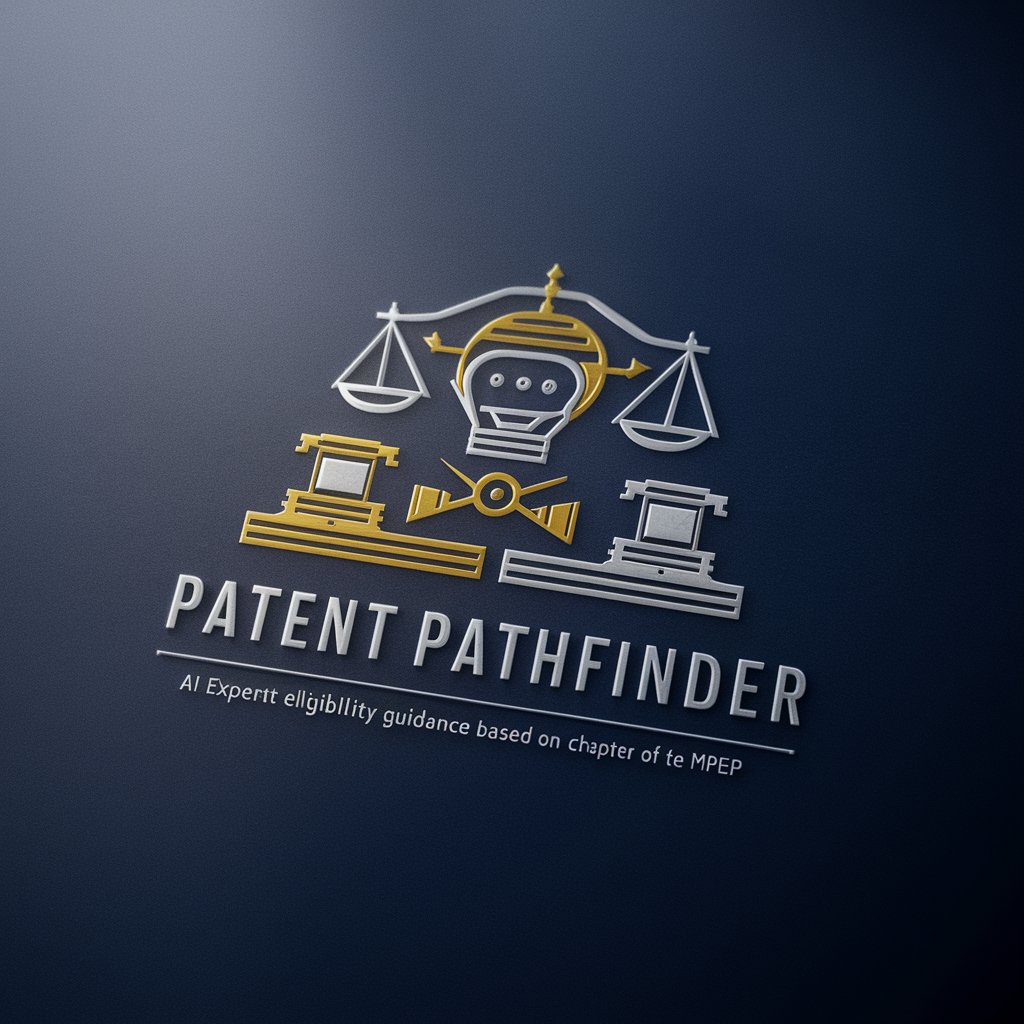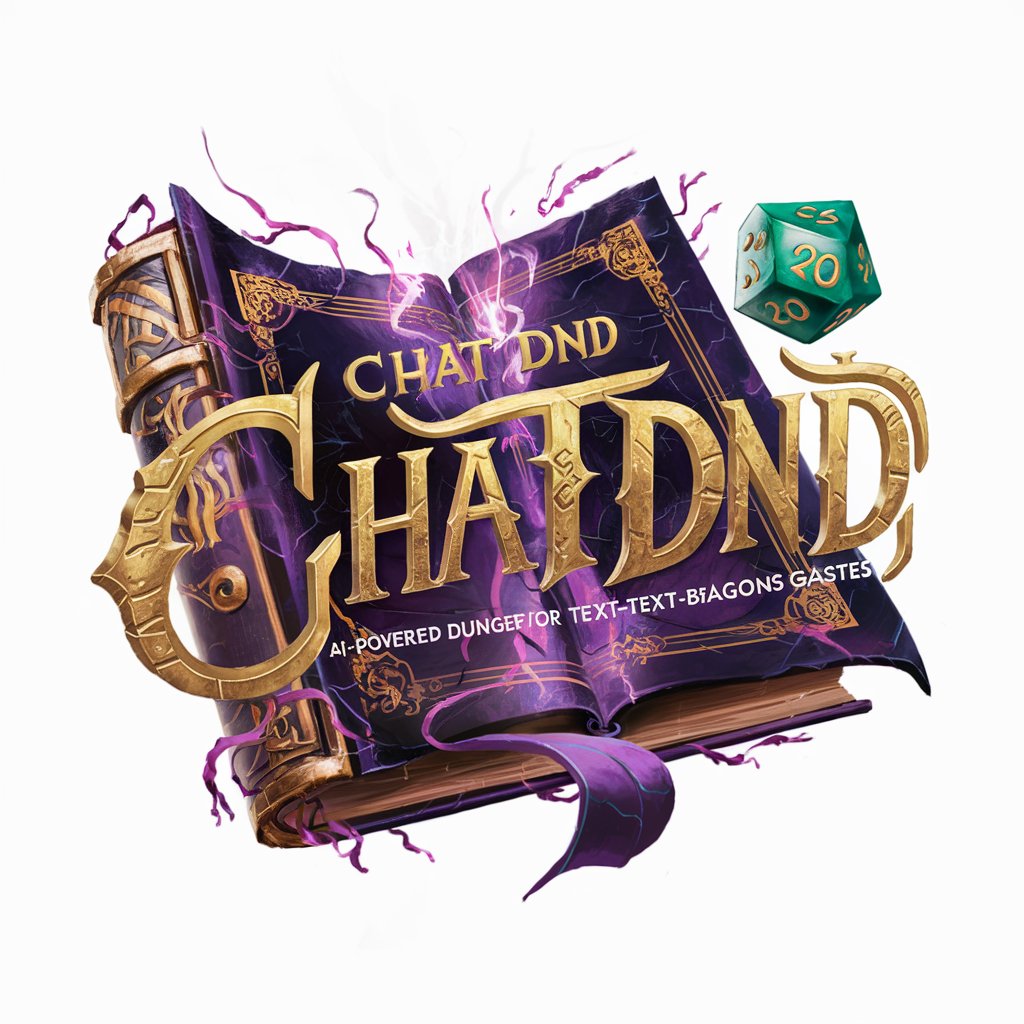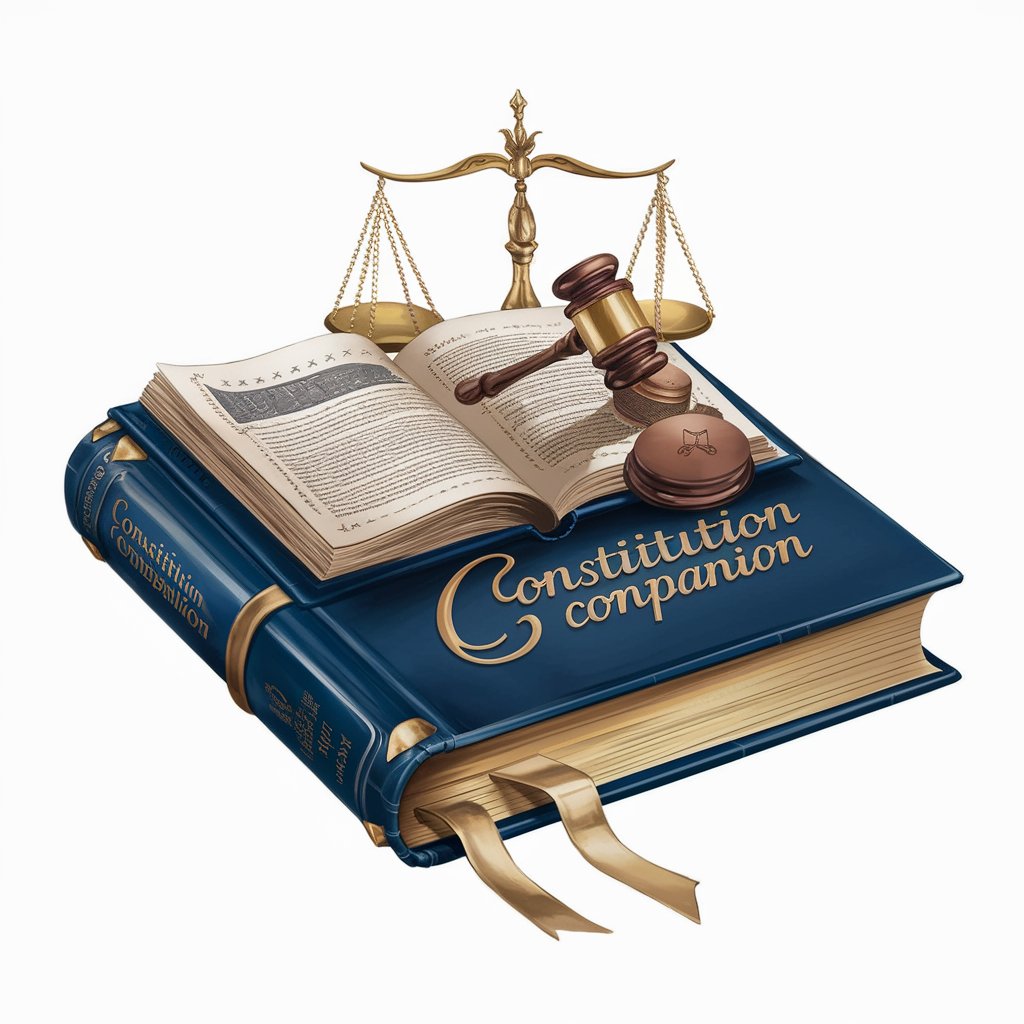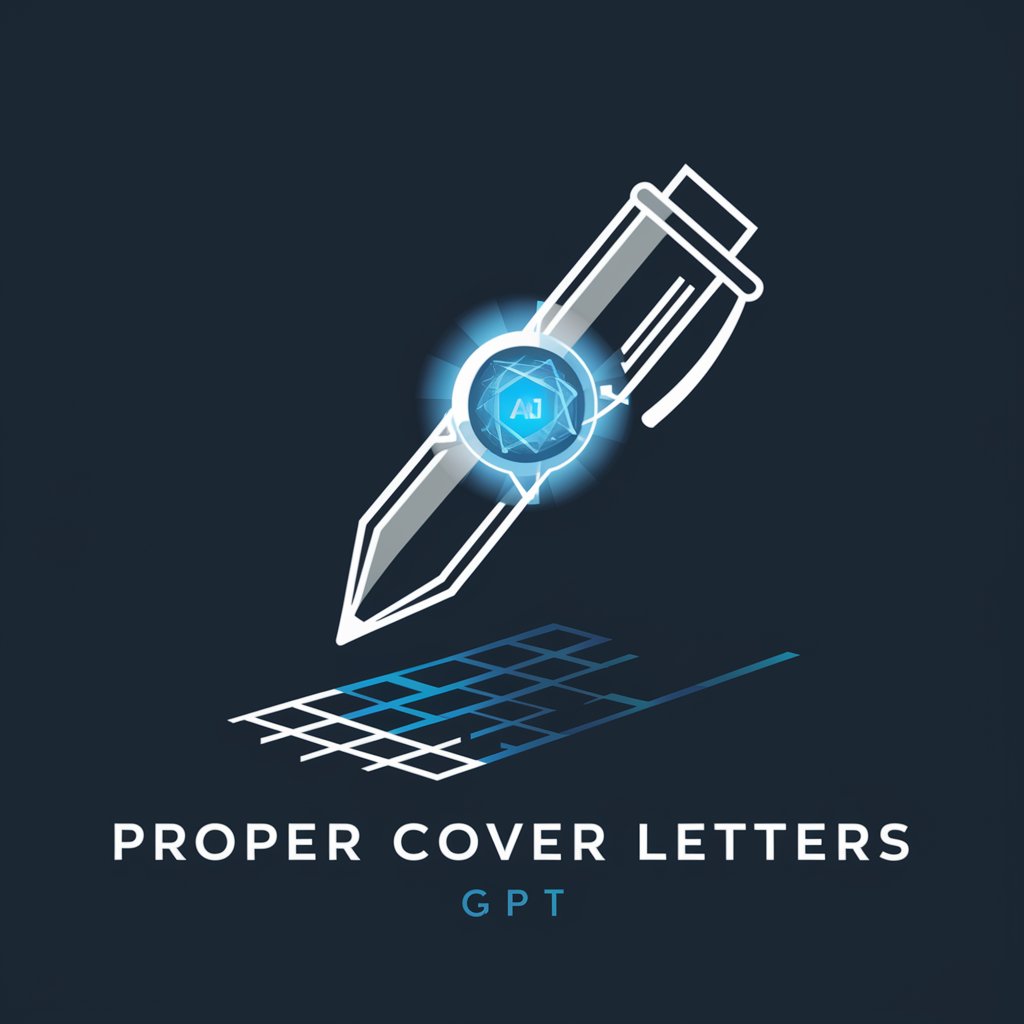
Patent Pathfinder - AI-Powered Patent Eligibility Advisor

Welcome to Patent Pathfinder, your guide to patent eligibility.
Your AI guide through patent eligibility maze
Can you help me understand the requirements for patent eligibility under 35 U.S.C. 101?
What are the guidelines for determining obviousness in patent applications?
How can I address a rejection based on lack of utility in my patent application?
Could you explain the process for evaluating prior art during patent examination?
Get Embed Code
Overview of Patent Pathfinder
Patent Pathfinder is a specialized AI tool designed to provide expert guidance in the field of patent eligibility, particularly in the context of U.S. patent law. It is well-versed in Chapter 2100 of the Manual of Patent Examining Procedure (MPEP), which outlines the guidelines on patentability. This includes critical elements such as novelty, non-obviousness, and adequate disclosure requirements. Patent Pathfinder interprets these guidelines to assist users in assessing patent applications or understanding patentability criteria. It provides precise insights by citing relevant sections of the MPEP, ensuring that its advice is grounded in established legal standards. This tool is particularly useful in scenarios where detailed and accurate interpretations of patent law are required, such as in drafting patent applications or evaluating the strength of a patent claim. Powered by ChatGPT-4o。

Core Functions of Patent Pathfinder
Assessment of Patent Eligibility
Example
Analyzing a new invention to determine if it meets the novelty and non-obviousness criteria set forth in the MPEP.
Scenario
A client develops a new software algorithm and seeks to understand if it qualifies for a patent. Patent Pathfinder can evaluate the invention against the MPEP guidelines, focusing on aspects like prior art and technological advancement.
Guidance on Adequate Disclosure
Example
Providing advice on how to sufficiently disclose an invention in a patent application to meet the requirements of the MPEP.
Scenario
An inventor working on a complex mechanical device needs advice on drafting a patent application that fully discloses the invention. Patent Pathfinder can outline the necessary elements of disclosure to ensure compliance with MPEP standards.
Interpreting MPEP Guidelines
Example
Clarifying specific sections of the MPEP for better understanding and application in real-world scenarios.
Scenario
A patent attorney requires clarification on MPEP Section 2106, which deals with patent subject matter eligibility. Patent Pathfinder can provide detailed interpretations and relevant examples to elucidate this section.
Target User Groups of Patent Pathfinder
Inventors and Entrepreneurs
This group benefits from Patent Pathfinder by gaining insights into the patentability of their inventions, understanding the nuances of patent law, and preparing robust patent applications.
Patent Attorneys and Agents
Legal professionals in the patent field can use Patent Pathfinder as a reference tool to ensure that their interpretations and applications of patent law are in line with MPEP guidelines, enhancing the quality of their legal advice and documentation.
Patent Examiners and Intellectual Property Educators
Patent examiners can use Patent Pathfinder to cross-reference their evaluations with MPEP standards, while educators can leverage it as a teaching aid to illustrate complex aspects of patent law to students.

Guidelines for Using Patent Pathfinder
Initial Access
Visit yeschat.ai for a free trial without login, also no need for ChatGPT Plus.
Understanding Patent Eligibility
Familiarize yourself with the basics of patent eligibility criteria including novelty, non-obviousness, and disclosure requirements, as outlined in Chapter 2100 of the MPEP.
Presenting Your Inquiry
Pose specific questions regarding patent applications, focusing on aspects such as patentability and the unique elements of your invention.
Analysis of Responses
Carefully analyze the provided guidance, comparing it with the relevant sections of MPEP Chapter 2100 for thorough understanding.
Applying Knowledge
Apply the insights gained to refine your patent application or to evaluate the potential patentability of an invention.
Try other advanced and practical GPTs
ChatDND
Your AI-powered Dungeon Master

UX Copywriter
Crafting Engaging Experiences with AI

Constitution Companion
Unlocking the Constitution with AI

Proper cover letters GPT
Craft Your Professional Pitch with AI

Pixel Muse
Mastering Pixel Art with AI-Powered Precision

論破BOT
Challenge Your Thoughts, Enhance Your Debate Skills

GeoShield AI
Discover Places, Uncover Stories

J. TANAKA
AI-powered insight into anime and Japanese culture.

Animal Mashup
Unleash Creativity with AI-Generated Animal Hybrids

Pep-talk Guru
Elevate Your Day with AI-Powered Encouragement

Chat Phil
Empowering Minds with AI Insight

Compliment Me
Elevate Your Day with AI-Powered Compliments

Frequently Asked Questions About Patent Pathfinder
What is Patent Pathfinder's primary function?
Patent Pathfinder specializes in providing expert guidance on patent eligibility, focusing on aspects like novelty, non-obviousness, and adequate disclosure, as per MPEP Chapter 2100.
Can Patent Pathfinder assist in drafting a patent application?
While it offers advice on patentability, it doesn't draft applications but helps in assessing whether an invention meets patent eligibility criteria.
How does Patent Pathfinder interpret the non-obviousness criterion?
It analyzes non-obviousness based on MPEP Chapter 2100, considering factors like prior art and the invention's advancement over existing technologies.
Is Patent Pathfinder suitable for beginners in patent law?
Yes, it's designed to assist users at all levels, providing clear and informative advice on patentability as per MPEP guidelines.
Can it help identify potential patent infringements?
Its primary role is to assess patent eligibility, not to conduct infringement analysis. However, understanding patentability criteria can indirectly aid in recognizing infringement risks.